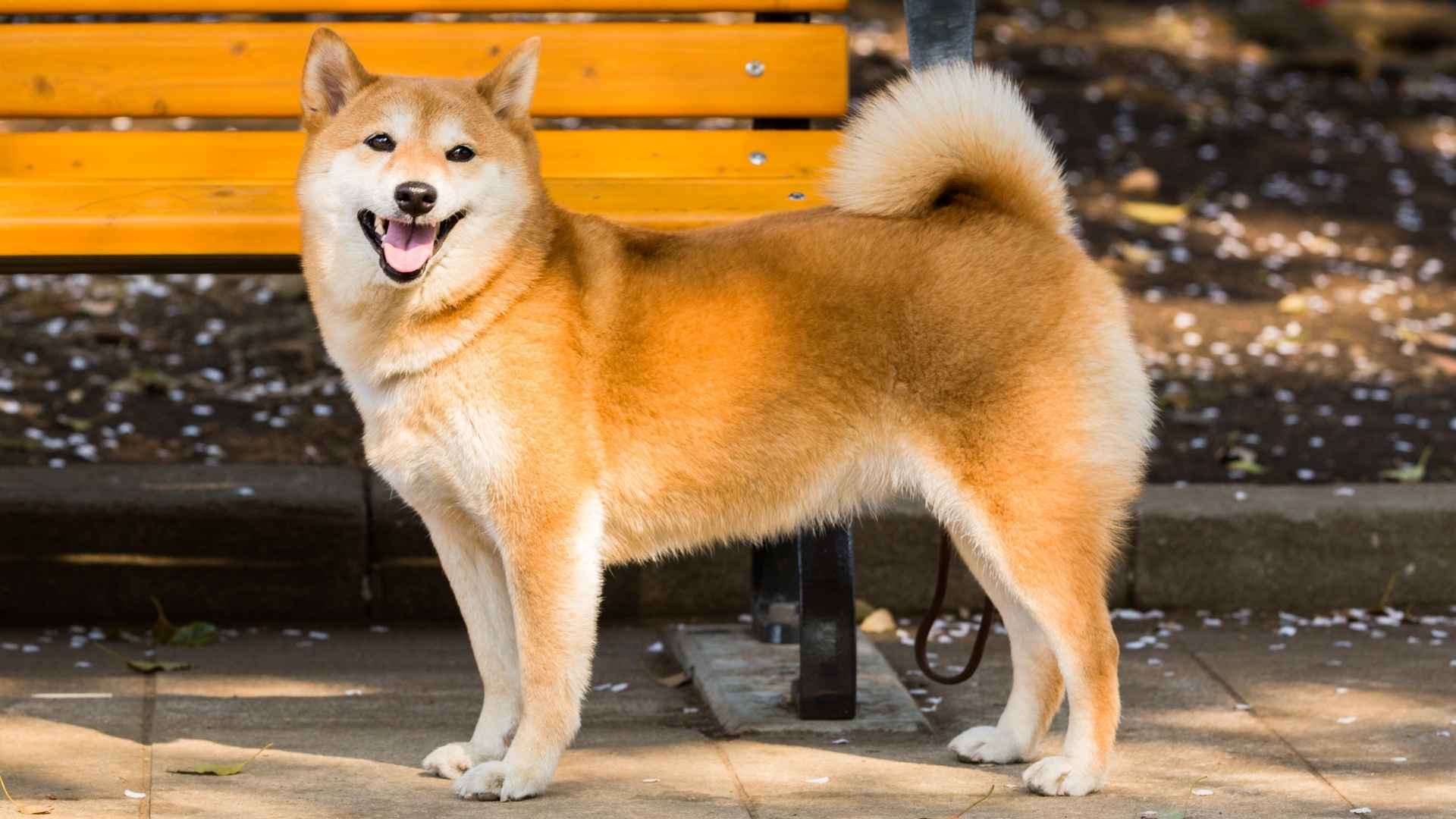Few things add flair to a dog’s silhouette like a naturally curly tail. Whether it’s a loose swirl, a tight corkscrew, or a fluffy sickle held high over the back, curly tails are more than just cute; they’re the result of evolution, function, and breed heritage. This distinctive trait originates from wedge-shaped vertebrae in the tail, giving it its iconic curve while still allowing for plenty of enthusiastic wagging.
Curly tails have appeared in dog breeds for practical reasons. In Arctic climates, they helped conserve heat by curling over a dog’s nose. In herding and scent-trailing breeds, upright tails enhanced communication and visibility. For swimmers like the Curly-Coated Retriever, a curly tail assisted with movement in water. While these adaptations once served survival and work, today they add irresistible charm to many beloved breeds.
From plush-coated companions to sleek hunting hounds, curly tails appear in dogs of all sizes and temperaments. In this guide, we’ll explore a delightful roundup of dog breeds whose tails twist and curl with personality and purpose.
Dog Breeds With Naturally Curly Tails
1. Pomeranian
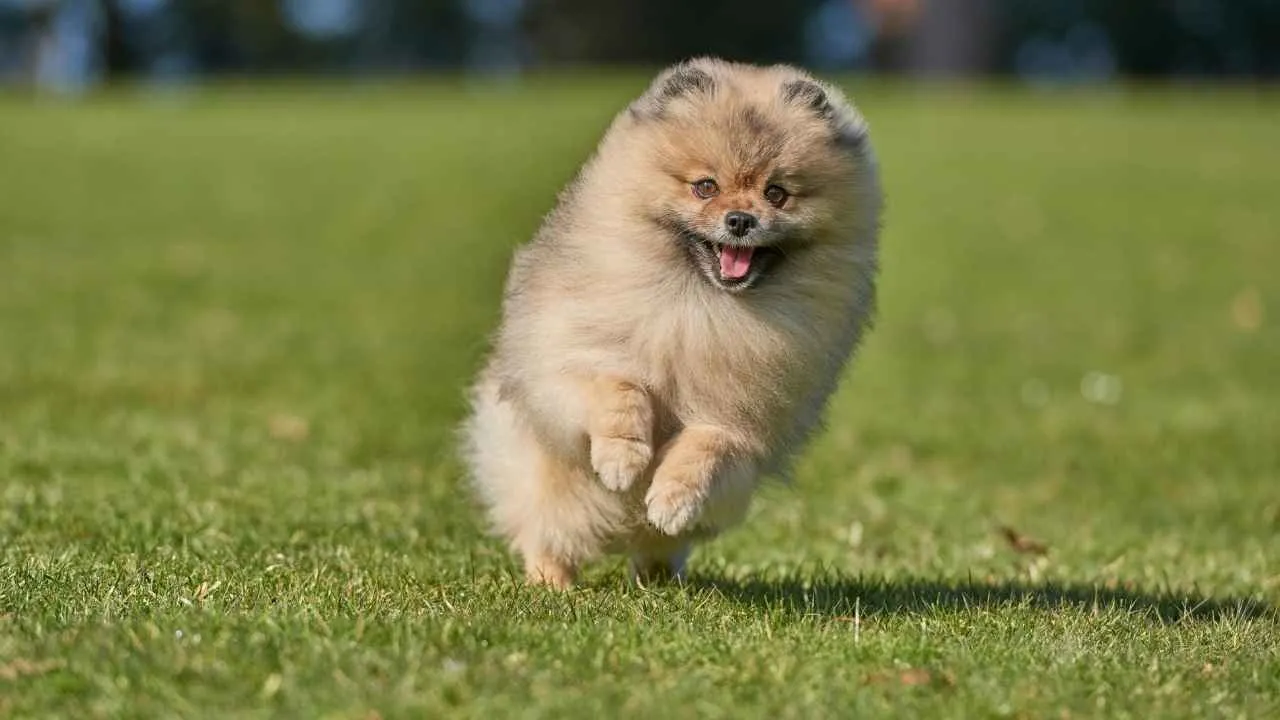
Key Traits
Size: Small (3–7 lbs)
Temperament: Alert, bold, energetic
Best for: Apartment living, attentive owners, single-pet homes
The Pomeranian’s curled tail fans out over its back and is a key part of its silhouette. Despite its size, this is an active breed that benefits from short daily walks and indoor play. Due to its small size and escape tendencies, supervision is critical during outdoor time.
According to the AKC, these dogs have a dense double coat that requires brushing down to the skin at least weekly to prevent matting. Their tail fur can clump easily, especially without regular grooming. Many owners opt for professional grooming every 4–6 weeks.
They are intelligent and quick to learn basic commands or tricks, but can be noisy and stubborn during training. Early housebreaking and leash training are recommended to avoid behavior issues.
Pomeranians are prone to certain health concerns, such as tracheal collapse, luxating patella, and alopecia X. Joint protection and gentle handling are important throughout their lives.
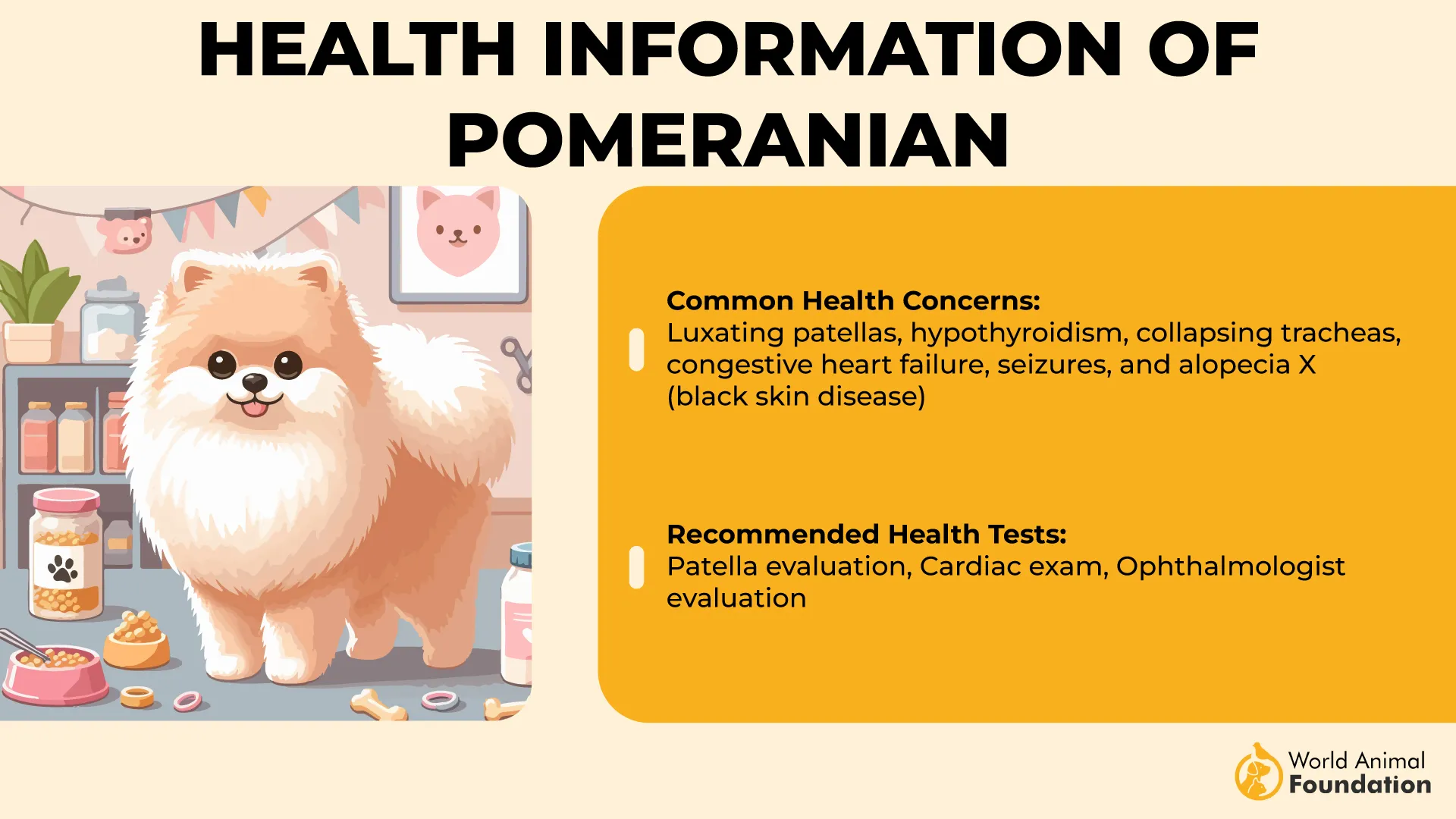
They are typically wary of strangers and unfamiliar animals, which makes early socialization useful for better adaptability. Families with older children tend to be a better fit due to the Pom’s fragility.
2. Pug
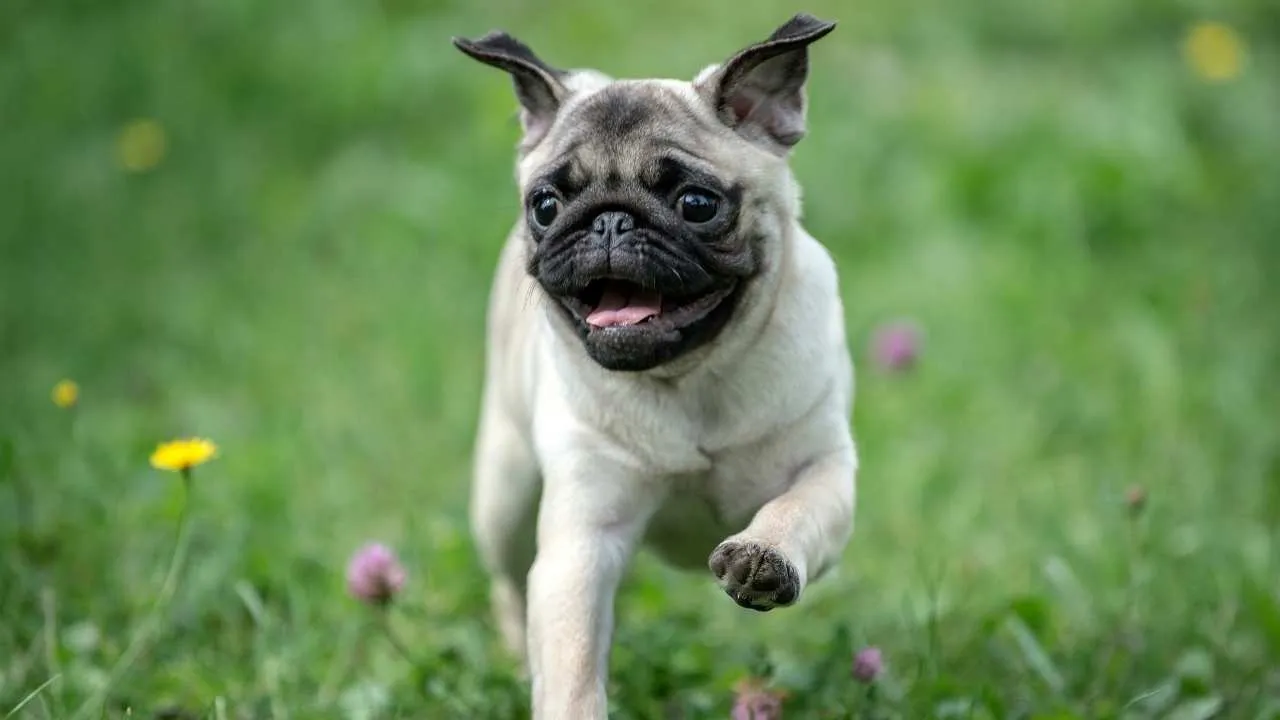
Key Traits
Size: Small (14–18 lbs)
Temperament: Affectionate, playful, even-tempered
Best for: Indoor homes, families, low-intensity lifestyles
Pugs have tightly curled tails that often form a double curl over their hip. Their tail is one of their most recognized features, but it should be monitored for signs of spinal tension or discomfort.
These curly-tailed friends are susceptible to breathing issues due to their short muzzles. Physical activity must be low-impact and limited during heat or humidity. Moderate walks and light indoor play are usually sufficient.
Grooming needs are moderate; short coat brushing weekly is enough, but the facial folds and tail base require routine cleaning to prevent bacterial buildup. Nail trims and dental care are also essential.
Pugs are generally friendly with children, visitors, and other pets. However, they can gain weight easily and require portion control and limited treats.
They respond well to gentle training methods. Most are food motivated, which helps in reinforcing commands, but distraction and short attention spans can slow progress without consistency.
3. Shiba Inu
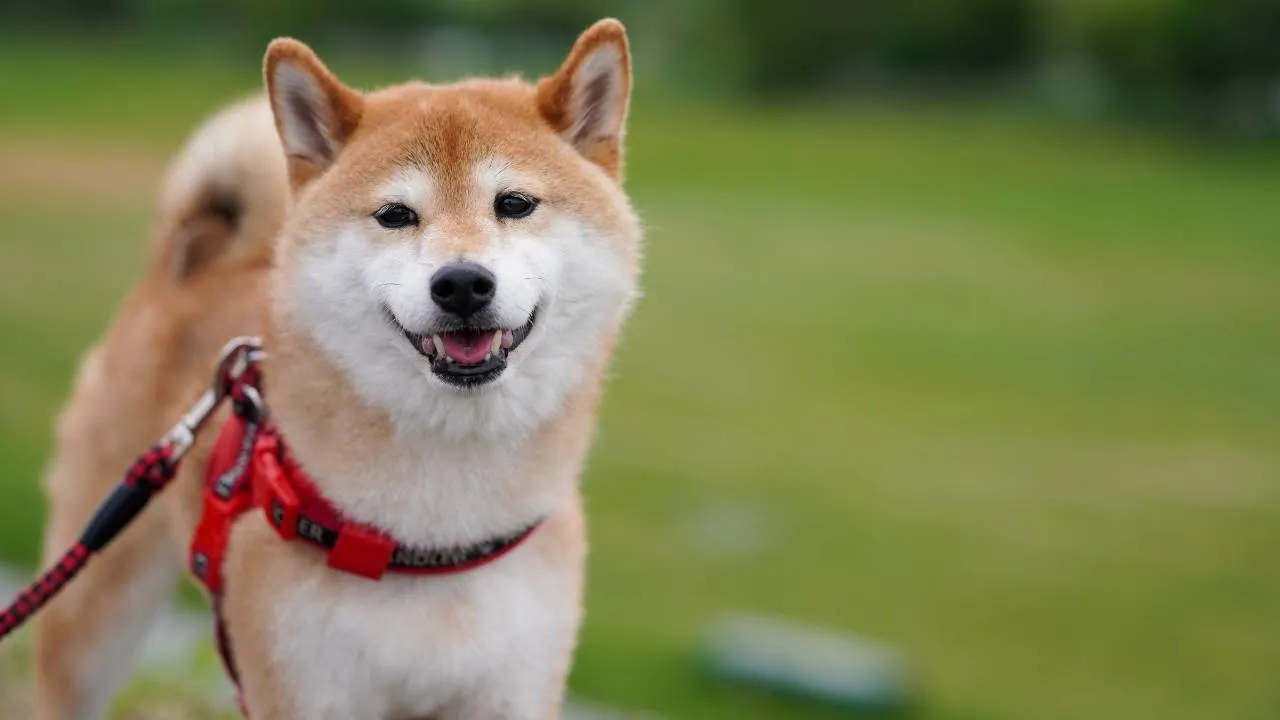
Key Traits
Size: Small to medium (17–23 lbs)
Temperament: Independent, alert, confident
Best for: Experienced owners, secure yards, structured environments
The Shiba Inu’s tightly curled tail sits high and rests over its back. It’s a defining feature of the breed and part of its spitz ancestry. This tail does not require special grooming but should be brushed to prevent fur buildup.
These dogs are clean and often self-groom, but they shed heavily. Weekly brushing is a minimum; daily is needed during seasonal shedding. Their double coat resists matting but sheds in clumps.
According to PetPlan, Shibas are known for being stubborn and aloof. While they are intelligent, training must begin early and remain consistent. Recall can be unreliable, and most Shibas should remain on leash in open areas.
They are highly alert and vocalize using a variety of sounds. While not chronic barkers, they may yodel or scream when excited or annoyed.
Exercise needs are moderate. Shibas thrive with daily walks and puzzle games but can become destructive if understimulated. Their strong prey drive requires secure fencing and supervision around small animals.
4. Samoyed
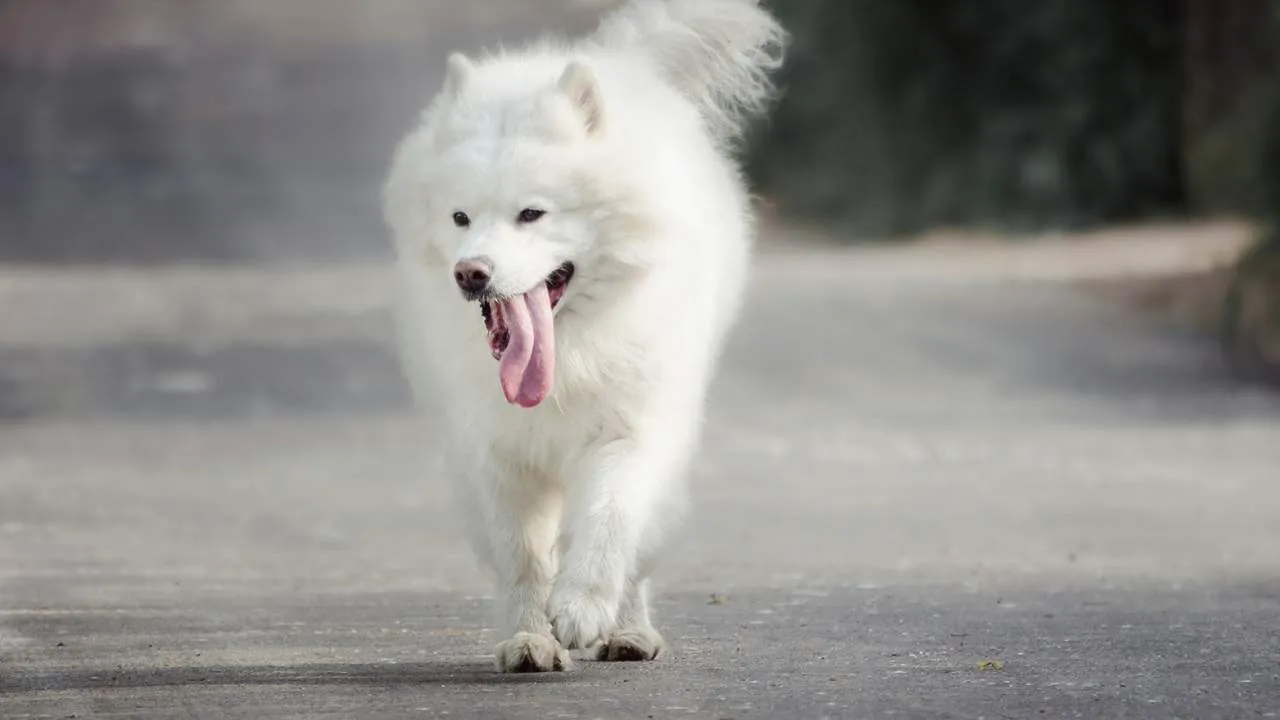
Key Traits
Size: Medium to large (35–65 lbs)
Temperament: Friendly, active, social
Best for: Cold climates, families, high-activity homes
The Samoyed’s curled tail arches over its back and lies against its body, especially in colder weather. The tail, along with their dense coat, offers warmth and is part of their arctic adaptation.
These dogs shed heavily year-round, with a full undercoat blow twice annually. Daily brushing is needed to manage coat volume and reduce matting, especially around the tail and rear.
Samoyeds need at least two hours of exercise per day. They are high-energy and do best in homes where they have room to move or structured physical activities like hiking or agility.
Their temperament is sociable and generally easygoing, though they can be vocal and may bark out of boredom or alertness. They do well with other dogs and children if socialized early.
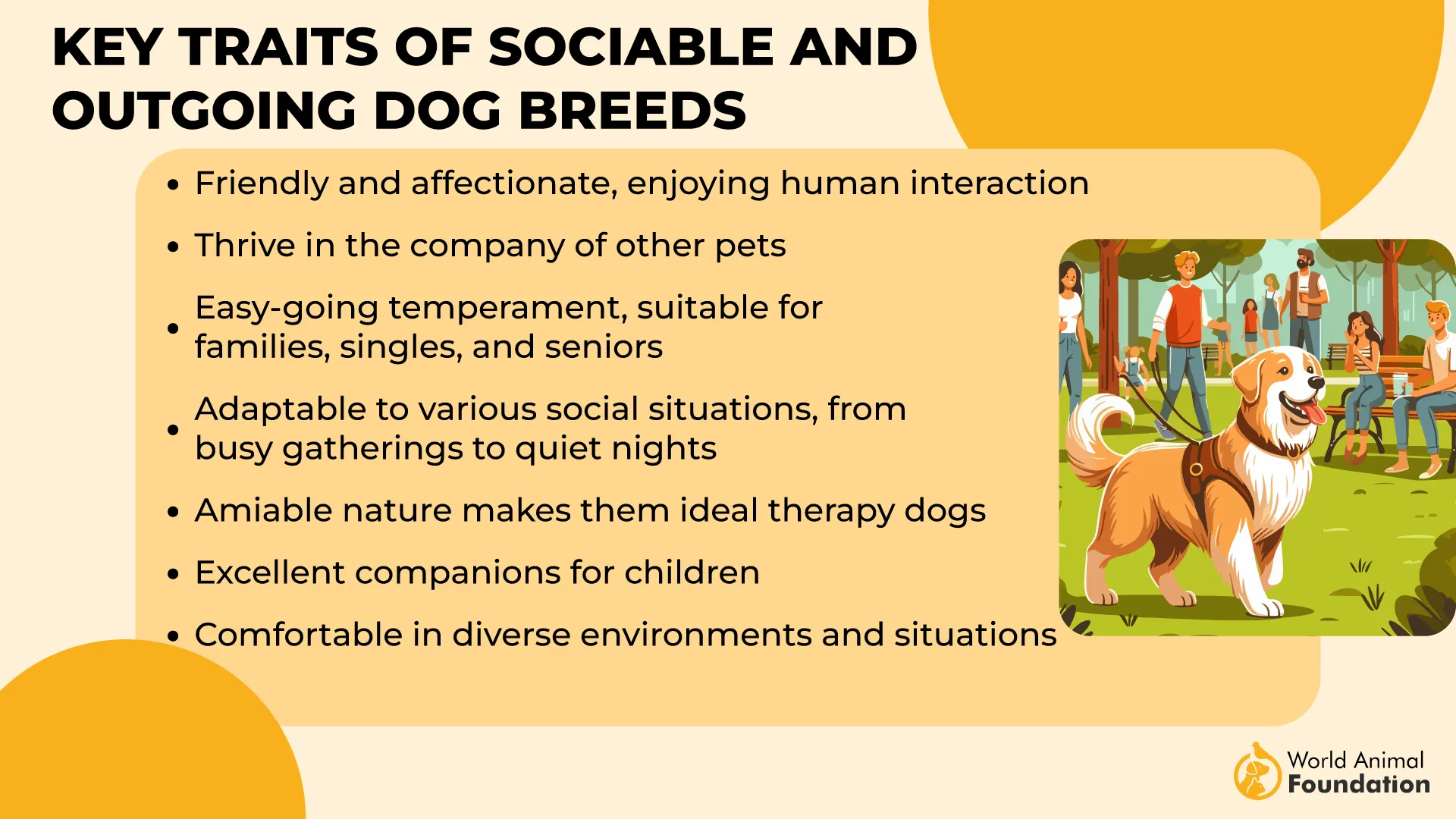
Health issues may include hip dysplasia, eye problems like PRA, and inherited kidney or heart disorders. Temperature sensitivity is a concern—Samoyeds must be monitored for heat stress in warm environments.
5. Akita
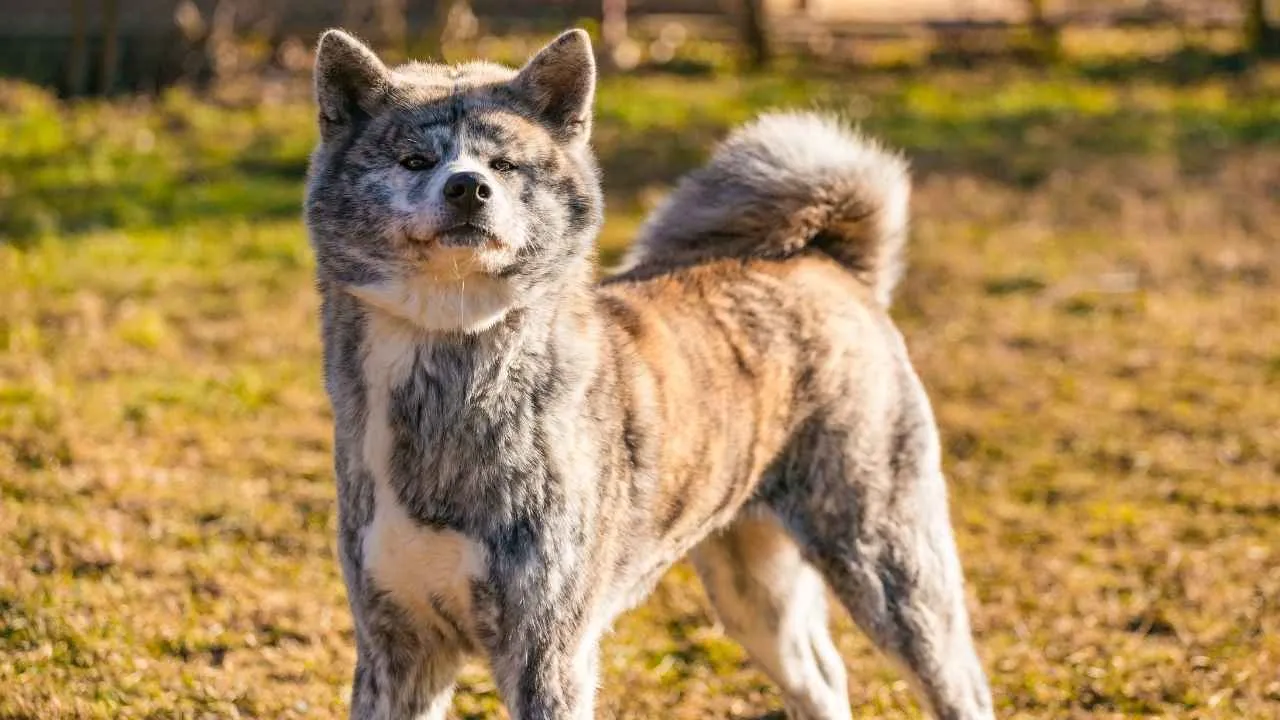
Key Traits
Size: Large (70–130 lbs)
Temperament: Independent, loyal, reserved
Best for: Experienced owners, cool climates, single-pet homes
Akitas have curled tails that sit high and tight over their backs. Their thick double coat and curled tail evolved for cold weather and provide good insulation. These dogs shed heavily, especially during seasonal changes, and require regular brushing.
They are strong and physically powerful. Originally used for hunting in Japan, Akitas are not naturally social with other dogs or animals. They prefer to be the only pet in the household. Early socialization is important to prevent territorial behavior.
Training should begin early. They respond best to calm, firm leadership and clear rules. While intelligent, Akitas can be stubborn and selective in following commands, so consistency matters.
Their grooming needs include weekly brushing and more frequent grooming during shedding season. The feathered tail can mat if not maintained properly. Baths should be occasional unless the dog gets dirty.
Akitas need daily exercise but are not overly energetic. A fenced yard and leash walks are usually enough. They are generally quiet and do not bark much, but they will be alert to their surroundings.
6. Alaskan Malamute

Key Traits
Size: Large (75–85 lbs)
Temperament: Friendly, active, strong-willed
Best for: Cold weather, large yards, active households
Alaskan Malamutes have large, bushy tails that curl over their backs. This tail helps them retain warmth in freezing climates. Their thick coat and feathered tail need frequent brushing, especially during their twice-yearly shed.
Malamutes are working dogs and have high endurance. WebMD states that they need at least 1–2 hours of physical activity per day. Without enough exercise, they can become destructive or bored.
They are friendly but independent. Malamutes are pack-oriented and may not get along with dogs of the same sex. They also have a strong prey drive and may not be safe around small pets.
Training requires patience and consistency. They are intelligent but may test boundaries. Owners should use positive reinforcement and avoid harsh corrections.
Grooming involves brushing several times a week. Mats often form near the tail and hindquarters. They don’t need frequent baths, but should have their ears, teeth, and nails maintained regularly.
7. Chow Chow
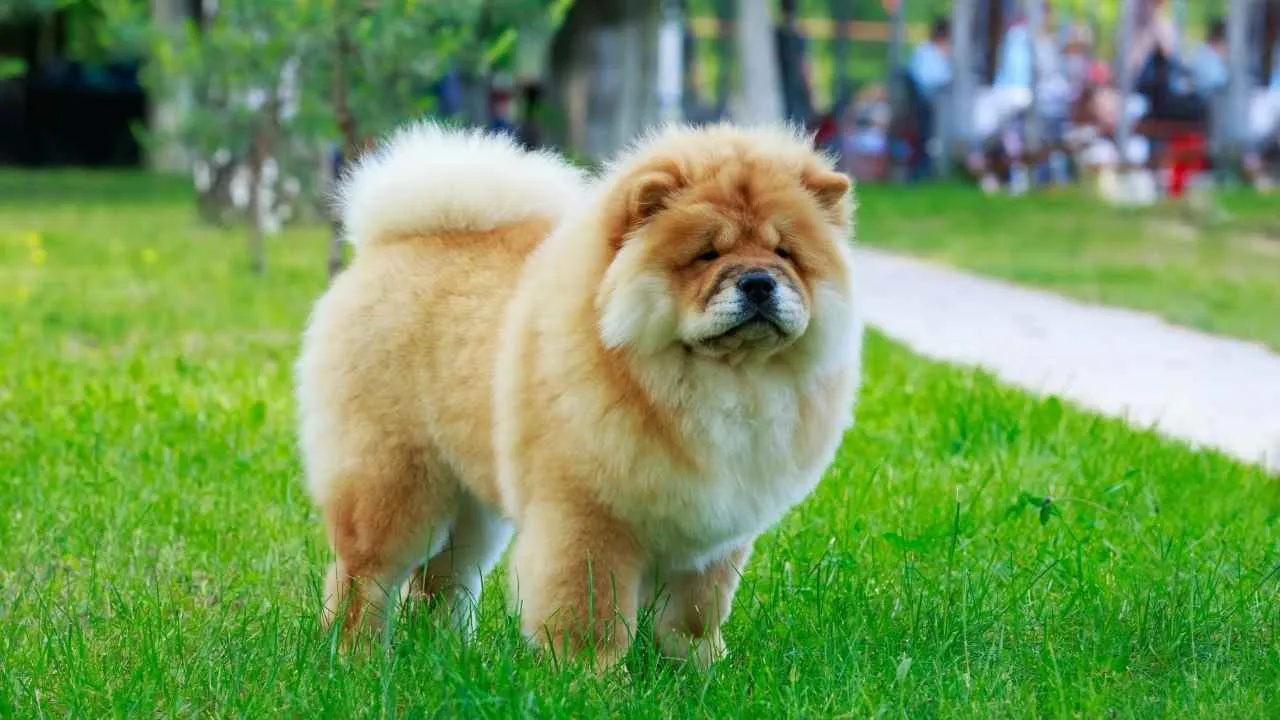
Key Traits
Size: Medium to large (45–70 lbs)
Temperament: Aloof, loyal, quiet
Best for: Experienced owners, calm homes, moderate activity levels
Chow Chows have thick, curled tails that rest over their backs. Their double coat sheds heavily, especially in spring and fall. Daily brushing is recommended to avoid mats, especially near the tail and thighs.
They are independent and reserved, often described as cat-like. Chow Chows tend to bond with their families but are cautious with strangers. Proper socialization from puppyhood is necessary.
These dogs are moderately active and need about an hour of exercise each day. They tolerate quiet environments well but dislike hot weather due to their dense fur.
Training should start early. Chow Chows respond to consistent routines and calm handling. They do not respond well to force or overly enthusiastic training methods.
Due to their thick coat and skin folds, regular grooming and hygiene checks are necessary. Their tail area should be monitored for debris, and their ears and eyes checked for signs of infection.
Conclusion
Curly-tailed dogs are found across some of the oldest and most iconic breeds, many originally bred for herding, hunting small or large game, or pulling carts. This unique dog’s tail structure, often coiled like a cinnamon roll or shaped as a plush plume, is not just an adorable feature; it reflects a dog’s ancestry and purpose.
Common among spitz family breeds such as the Finnish Spitz or German Spitz, the plush tail often pairs with erect or pointed ears, a fox-like expression, and medium-length double coats adapted for colder climates. From the lion-like mane of the Chow Chow and its distinctive blue-black tongue, to the wrinkled face and affectionate nature of the Pug, these breeds offer a mix of cuddly appeal and ancient resilience.
Pet parents are drawn to these dogs for many characteristics: alertness, plush fur, mental stimulation needs, and the strong bonds they form. Whether you’re seeking a medium-sized dog with a broad head and smooth coat or a large dog once used for hunting birds or guarding China’s ruling families, dog breeds with curly tails offer both unique structure and lovable cuddliness.


